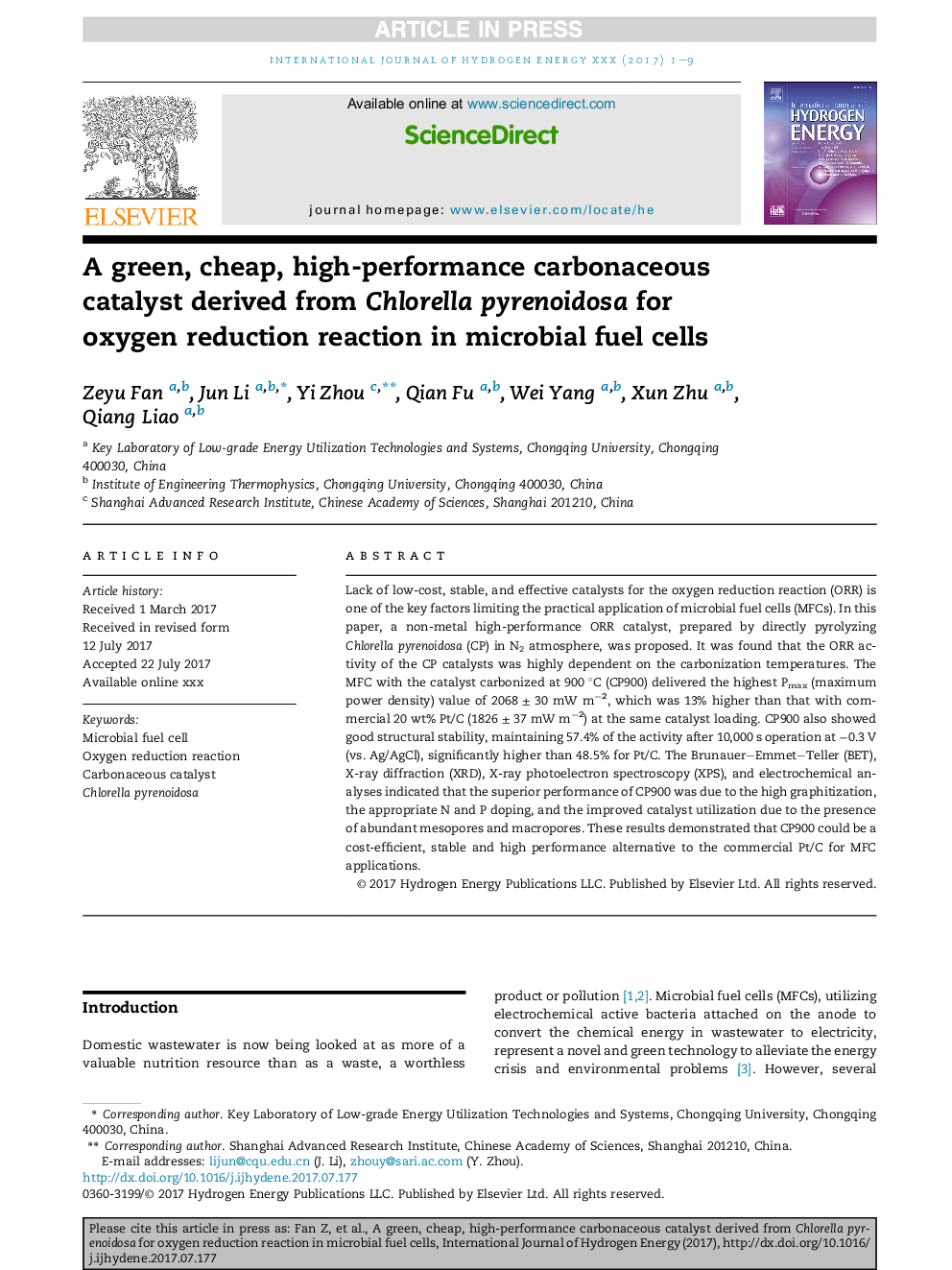| Article ID | Journal | Published Year | Pages | File Type |
|---|---|---|---|---|
| 7709604 | International Journal of Hydrogen Energy | 2017 | 9 Pages |
Abstract
Lack of low-cost, stable, and effective catalysts for the oxygen reduction reaction (ORR) is one of the key factors limiting the practical application of microbial fuel cells (MFCs). In this paper, a non-metal high-performance ORR catalyst, prepared by directly pyrolyzing Chlorella pyrenoidosa (CP) in N2 atmosphere, was proposed. It was found that the ORR activity of the CP catalysts was highly dependent on the carbonization temperatures. The MFC with the catalyst carbonized at 900 °C (CP900) delivered the highest Pmax (maximum power density) value of 2068 ± 30 mW mâ2, which was 13% higher than that with commercial 20 wt% Pt/C (1826 ± 37 mW mâ2) at the same catalyst loading. CP900 also showed good structural stability, maintaining 57.4% of the activity after 10,000 s operation at â0.3 V (vs. Ag/AgCl), significantly higher than 48.5% for Pt/C. The Brunauer-Emmet-Teller (BET), X-ray diffraction (XRD), X-ray photoelectron spectroscopy (XPS), and electrochemical analyses indicated that the superior performance of CP900 was due to the high graphitization, the appropriate N and P doping, and the improved catalyst utilization due to the presence of abundant mesopores and macropores. These results demonstrated that CP900 could be a cost-efficient, stable and high performance alternative to the commercial Pt/C for MFC applications.
Related Topics
Physical Sciences and Engineering
Chemistry
Electrochemistry
Authors
Zeyu Fan, Jun Li, Yi Zhou, Qian Fu, Wei Yang, Xun Zhu, Qiang Liao,
